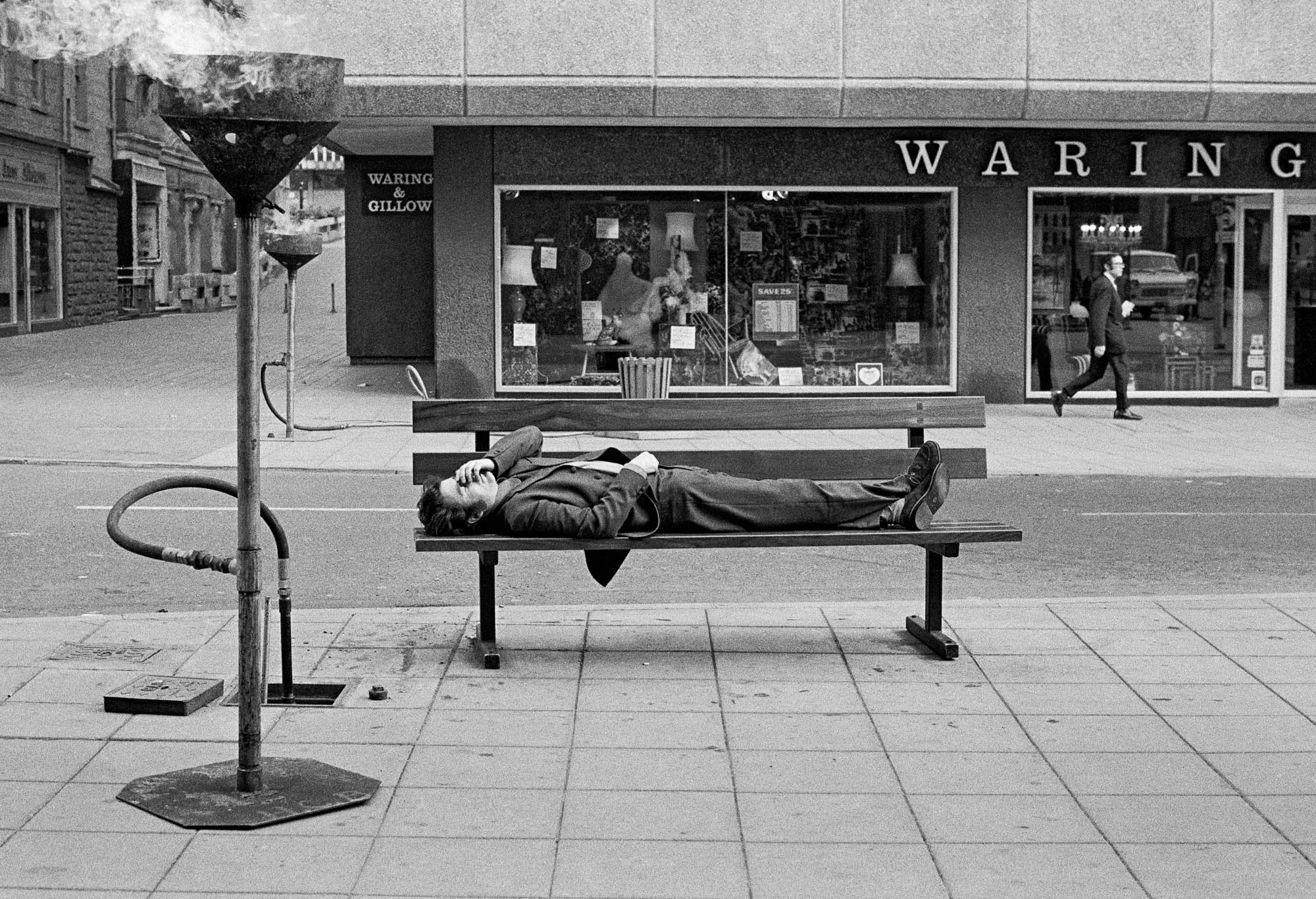© Daniel Meadows, courtesy of Bluecoat Press
Following the publication of his new book with Bluecoat Press, the photographer looks back on the Omnibus project and its development into a publication
Aged 21 and driving a double-decker bus, Daniel Meadows set up the Free Photographic Omnibus, travelling the UK for 14 months, offering free photographic portraits over fifty years ago. In his latest publication, Book of the Road, he mixes the portraits and reportage with transcripts, archival ephemera and his diaries.
During his time on the Omnibus, Meadows shot reportage guided by locals and recorded interviews and soundscapes. In 1995 he reconnected with some he had met, rephotographing them and finding out about the intervening years. Meadows published images from the Free Photographic Omnibus, firstly in 1975’s Living Like This, and more recently in 2019’s Now and Then.
Here, he tells Dalia Al-Dujaili how his project projected his visions of a changing Britain and the parallels to today’s British society, his experiences publishing with Bluecoat Press, and his thoughts on how photography has changed – almost drastically – today.




“Find me that camera and a cure for MS and I might start taking pictures again”
Dalia Al-Dujaili: What was the motivation of the Omnibus, and how did travelling on the road affect the photography?
Daniel Meadows: In 1972 I was studying photography at Manchester Poly and living in Moss Side. Disdainful of the top-down storytelling habits of mainstream media I developed an idea for a new approach to making documentary work which would come from the bottom up. The area where I lived was undergoing redevelopment, many shops and houses were being demolished. I discovered that for a few pounds a week I could rent a shop which was in the path of the bulldozers and I took on a former barber’s. I turned it into what we’d now call a pop-up studio and, on Saturdays, I invited people in to have their portraits taken.
I not only made photographs, I began using a tape recorder. There I developed the template for my subsequent practice, recording and communicating people’s stories, their motivations and triumphs, the ups and downs of changing circumstances. My photographs discovered the talkies.
In 1973 — after a year of crowdfunding and applying for grants — I put my shop on wheels. I bought a 1948 Leyland Titan PD1 double-decker bus and repurposed it as the Free Photographic Omnibus and I set off around England. I visited 22 different towns and cities, enjoying random encounters with strangers, holding free portrait sessions, making tape recordings, developing and printing the pictures overnight in my on-board darkroom and giving away the prints the next day. I also gathered a lot of parking tickets.
DA: Tell me about the lifespan of this work; how long had you worked on the project and how did you decide it was done?
DM: I had always planned to do it for a year, September 1973 until September 1974. No more. I was on my own, I knew how much energy it would require to do the work and how much money I had. Every month I made a fresh exhibition of pictures for the bus’s windows with a second copy for whomever had sponsored me in that region. I eked the money out carefully. As it transpired, though, I lost a few weeks to breakdowns and bad weather so I managed to stretch the adventure until the first week of November 1974. So, altogether, I was on the road for almost 14 months.
DA: What vision of Britain were you trying to portray — or subvert — in these images?
DM: The project was all about trying to find out what kind of Britain I was living in. What I discovered is that, on the whole, if you give people a chance they are generous and open hearted. Not everyone I met shared my principles or outlook on life but what that taught me was the importance of listening. For me the tape recordings I did are just as important as the photographs and, what is particularly lovely about Book of the Road, is that it revisits those recordings by including transcripts of interviews and also some of my audio diary pieces.

DA: What was the process of working with Bluecoat like?
DM: I love that a younger generation is interested in work which I produced such a long time ago. It delights me that my Bluecoat editor (Tom Booth Woodger) is almost fifty years younger than me. I gave him a completely free hand. I turned over the images and the tape transcripts and he did the rest; editing, sequencing, design, layout, printing, the whole thing and he kept me informed of what was happening all the way through. I also understand and admire the publishing model, which is a variation on traditional methods, including the payment of royalties.
DA: How has photography changed since the ’70s?
DM: For me it has stopped. In 2012 I was diagnosed with MS (multiple sclerosis) which plays hell with my energy levels and my hand-eye coordination. I no longer have a camera. I can’t find one which is the convivial tool I need. And I hate phones. Modern cameras are all far too small and fiddly with a ludicrous number of buttons on their outsides — all of which can be triggered by accident — and each button appears to activate an even more ridiculous number of sub-menus. Who needs all that choice I wonder, all that so-called ‘functionality’? What I’d like is a camera stripped bare, something like a digital version of an old-fashioned Rolleiflex. No flashing lights, no ‘display’, no fancy gizmos and just four buttons: focus, aperture, shutter speed and ISO. Find me that camera and a cure for MS and I might start taking pictures again.

During October, Bluecoat newsletter subscribers get £10 off Book of the Road and Special Edition prints






